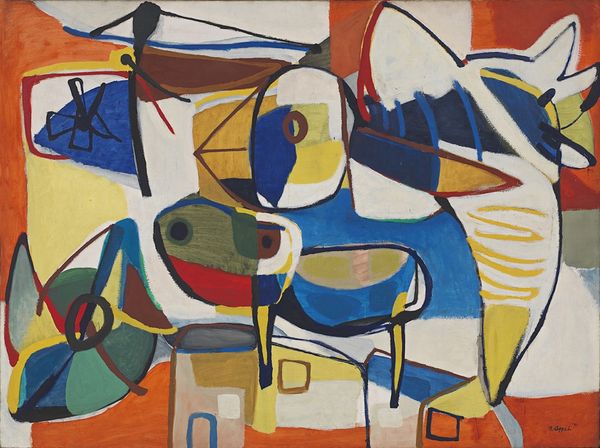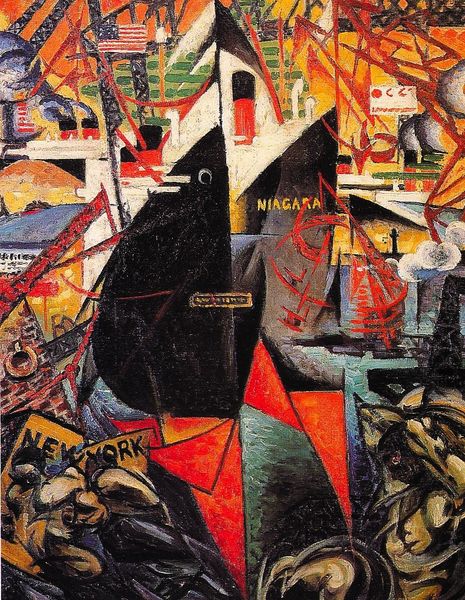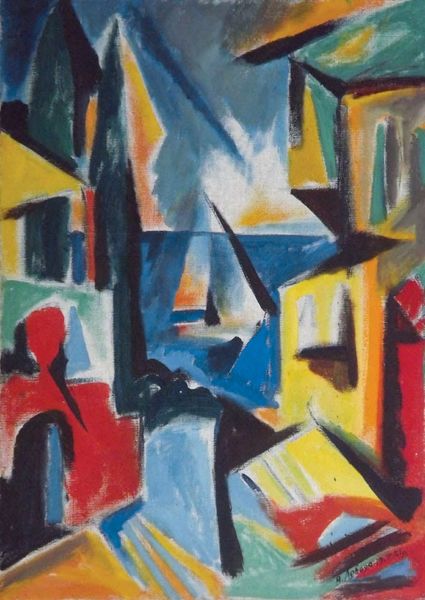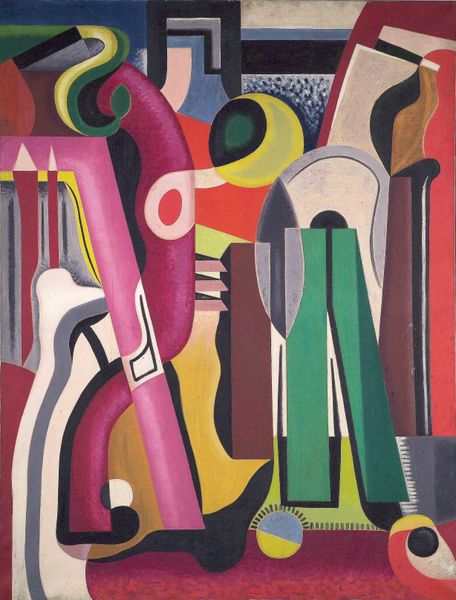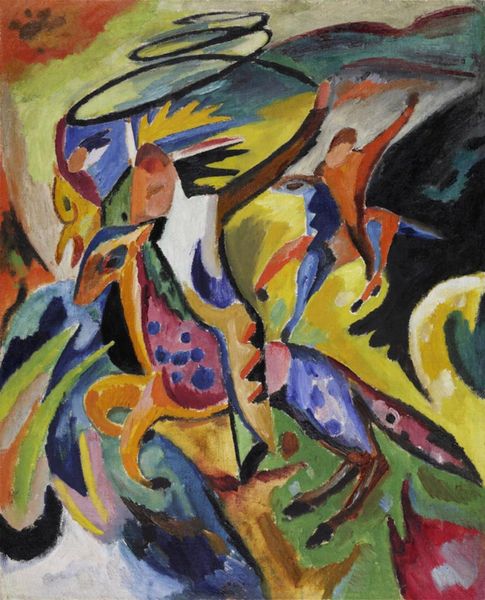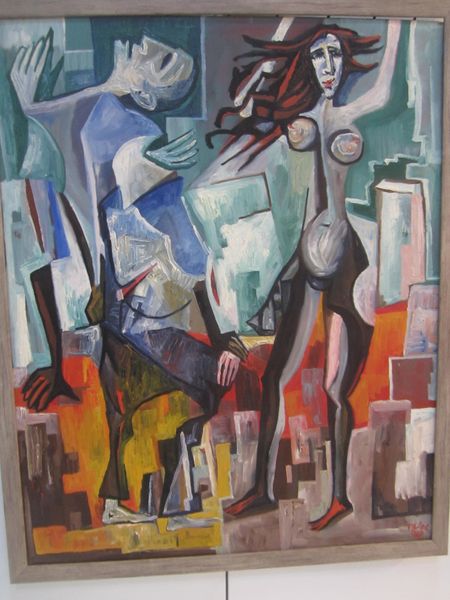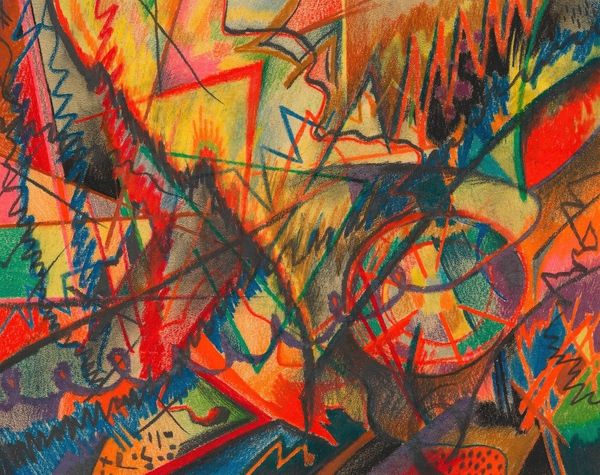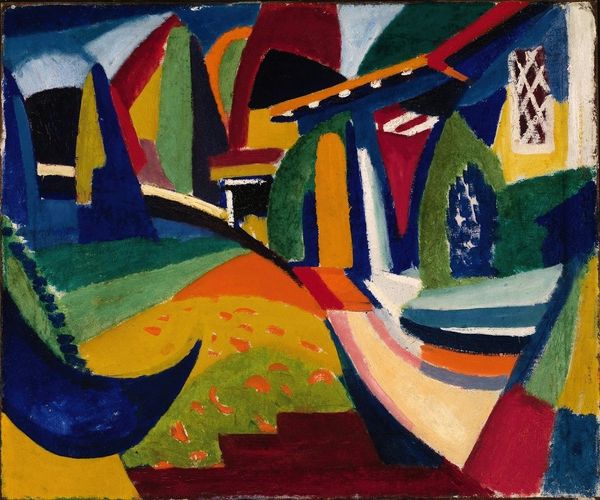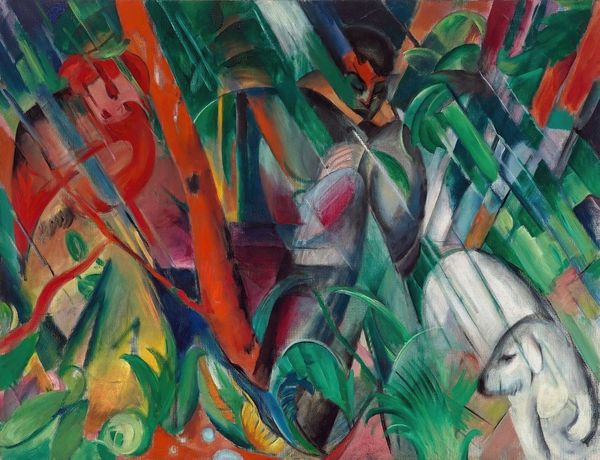
Copyright: Public domain US
Editor: Here we have Heinrich Campendonk’s "Bucolic Landscape," created in 1913 with oil paint. It has an energy that really strikes me. What's most remarkable to you about its composition? Curator: The artist’s deliberate fragmentation is indeed striking. Notice the geometric shapes – how they construct a fractured reality, seemingly on the verge of collapsing. Do you see how this fracturing informs your understanding? Editor: I guess so, it does feel like multiple perspectives smashed onto one canvas. Is that what makes it Cubist-inspired? Curator: Precisely. Note also the fauvist handling of colour. Those vibrant, non-naturalistic hues. Consider how the tension between fractured forms and bold colour contribute to the painting's overall dynamic. Are you seeing this visual language? Editor: I do. So the composition isn't just about representation, but more about the interplay between form and colour and challenging perspective. But the subject still seems like a simple landscape, right? Curator: One might see that the ostensible subject serves merely as a vehicle. For the artist, the dissolution of representational form might allow an exploration of something beyond pure visual experience. Editor: That’s really insightful. So focusing on these visual elements lets us decode its meaning without even considering historical context? I find this fascinating. Curator: Indeed, the intrinsic components contain all. Understanding these can be, in its own way, complete. Editor: I'm definitely seeing "Bucolic Landscape" with new eyes now! The way Campendonk plays with form and colour is really compelling. Thanks for illuminating that.
Comments
No comments
Be the first to comment and join the conversation on the ultimate creative platform.



